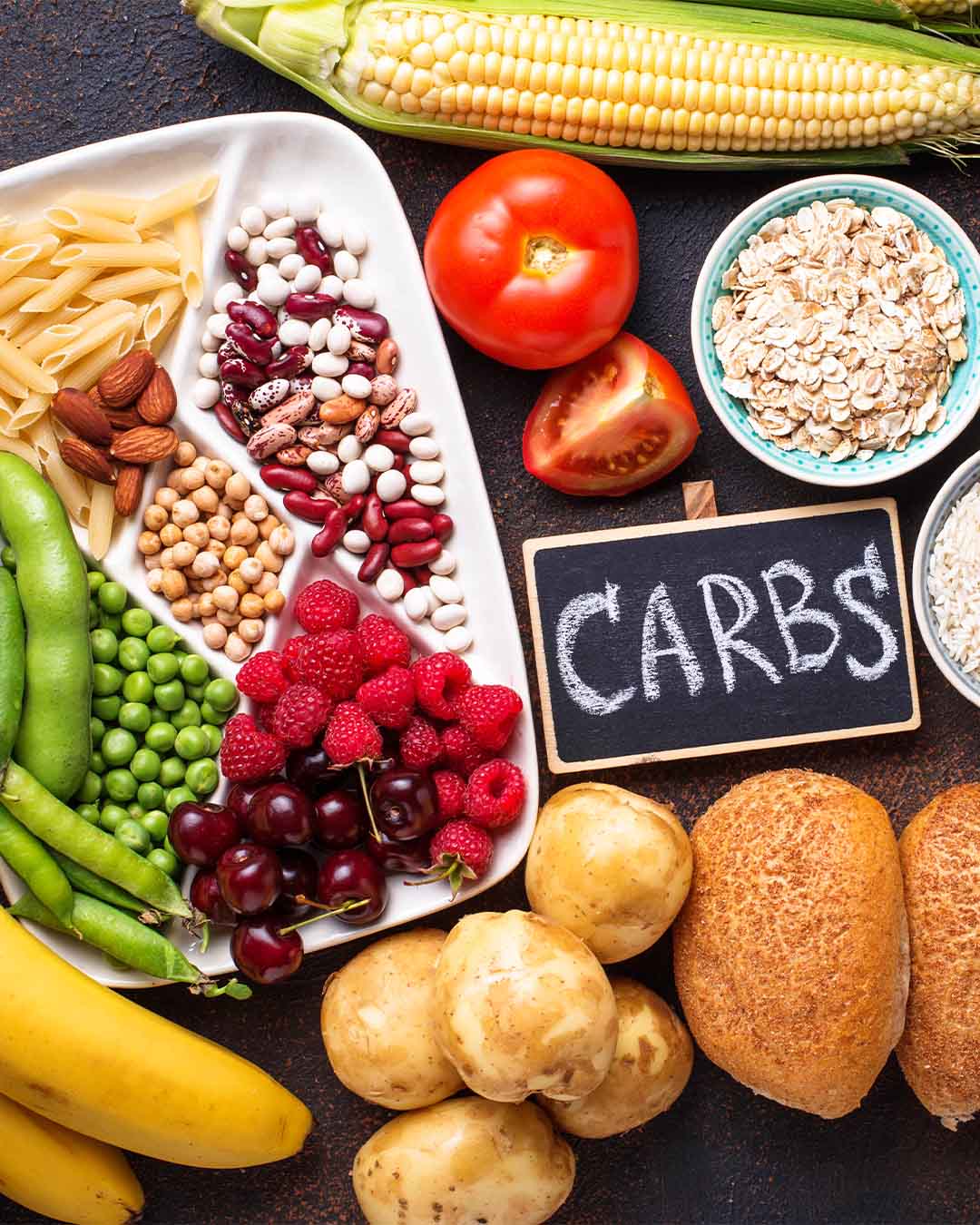What are Macros?
Macros is short for macronutrients. Macronutrients are the nutrients that our bodies need in larger amounts to provide energy and support vital functions. They are essential for growth, metabolism, and other bodily functions. The three main types of macronutrients are fats, carbohydrates, and proteins.
Why Count Macros?
Counting macronutrients, often referred to as "tracking macros," is a popular approach in nutrition and fitness for several reasons. It involves monitoring the intake of carbohydrates, proteins, and fats to achieve specific health or fitness goals.
If you're ready to see our simple formula, click on the image below. You'll learn enough to start meal planning as soon as today!

Fats
Fat gets a bad rap. Nobody wants extra body fat so some people assume they shouldn't eat any fat. Unfortunately, that's not the entire truth. Fats are essential for the formation of cell membranes, and they play a role in absorbing fat-soluble vitamins (A, D, E, and K). Furthermore, healthy fats, especially omega-3 and omega-6 fatty acids, are crucial for brain health, hormone production, and reducing inflammation. BUT, don't overdo it on the fat because too much fat, gets easily stored as fat. We'll try to find a happy medium between enough fat to keep you healthy, but not too much that you gain unwanted weight.
Most experts agree fats should be about 20-30% of your caloric intake. There are several ways to calculate your macros, but in this article, we are going to use your weight and multiplication factors.

Carbohydrates
Carbs also get a bad rap. Many people are currently on, or have tried, a low carb diet. Don't get me wrong, it is possible to lose weight on a low carb diet, but you may NOT be losing the best weight. You may be losing lots of water and muscle.
In addition, our bodies need glucose to perform optimally. If you watch sports, you even see athletes drink sugar (Gatorade) on the sidelines. It's been scientifically proven that sugar enhances sports performance. That's why low carb dieters sometimes suffer from low energy.
Instead of avoiding sugar, we've written on article on how candy can be beneficial for your workouts. It's best not to eat candy, but, if you have a sweet tooth, there are certain instances where candy can be beneficial for your workouts.
Most importantly, listen to your body. If a low carb diet isn't cutting it, go back to fueling your body with sugar, fat, and protein. You may be glad you did!

Protein
And the last macronutrient we will be discussing is my favorite...protein. Frankly, you need protein to survive. You also need protein to build muscle. Long ago, most experts recommended protein intake at 0.8 grams per kilogram of bodyweight. After many scientific studies, many experts discovered .8g/kg/bw wasn't enough for active individuals.
Since those days, we have made some modifications. Depending on your diet and activity, the new recommendation is between 1.2 to 1.8 grams per kilogram of body weight. Not sure how much protein you need? We've written an article to help you calculate your protein needs. Just click on the image below for more info.

Calculations
So now that you know how important each of the macronutrients is to your body, let's do some calculations for your needs. If you need more specific calculations, it is probably best to consult with a PFTA Certified Personal Trainer. But generally speaking, multiply your goal weight with the factors below:
- Fats 0.35
- Carbs 0.85
- Protein 0.85
Macros Example
For example, let's say I weigh 200 pounds. My goal weight is 190 pounds. If I combine resistance training, cardiovascular training, and the daily macros below, I should be able to accomplish my goal.
- Fats 190 x 0.35 = 67 grams
- Carbs 190 x 0.85 = 162 grams
- Protein 190 x 0.85 = 162 grams
These numbers are a pretty good estimate. But, if you want a more precise formula, or, you want to learn more about exercise science, click the image below for more info on our classes.

Meals
Now that you have your total macros for the day, just divide by the number of meals you would like to have each day. I usually have 5 or 6 small meals per day. So let's divide the numbers by 5. Each of my 5 meals would consist of:
- Fats 67 / 5 = 13 grams
- Carbs 162 / 5 = 32 grams
- Protein 162 / 5 = 32 grams
Therefore, if I consume 13/32/32, five times per day, I should reach my 190 pound goal in no time. But as I said earlier, I will also have to exercise most days to ensure I'm losing mostly fat, and NOT muscle. Now to find 5 perfect snacks and hit the gym!
In the meantime, if you need help designing a meal plan or an exercise plan, click on the image below to get more info on personal training.

Knowledge is Power
And if you want more tips on exercise and nutrition, add your email below. You'll receive weekly tips directly to your inbox. Plus, you'll also receive the occasional coupon code for our classes.
Summary
The truth is, if you want to lose weight, all you have to do is get yourself into a negative caloric balance. That means all you need to do is eat less calories than you burn each day. Easier said than done, right? To complicate matters, your weight loss may be muscle and water, instead of fat. That's why you have to know what to eat while you're working out and/or dieting. The above formula is a pretty good estimate on how to obtain your macros for your desired goal weight. There are other methods, especially more specific methods, but this a good starting point. Give this a try. Make adjustments if necessary. Make sure you are getting the right amount of macros to reach your goals more efficiently. Please contact me if you have any questions. Happy health and happy training!
Written By
RAescobar, PFTA instructor and personal trainer